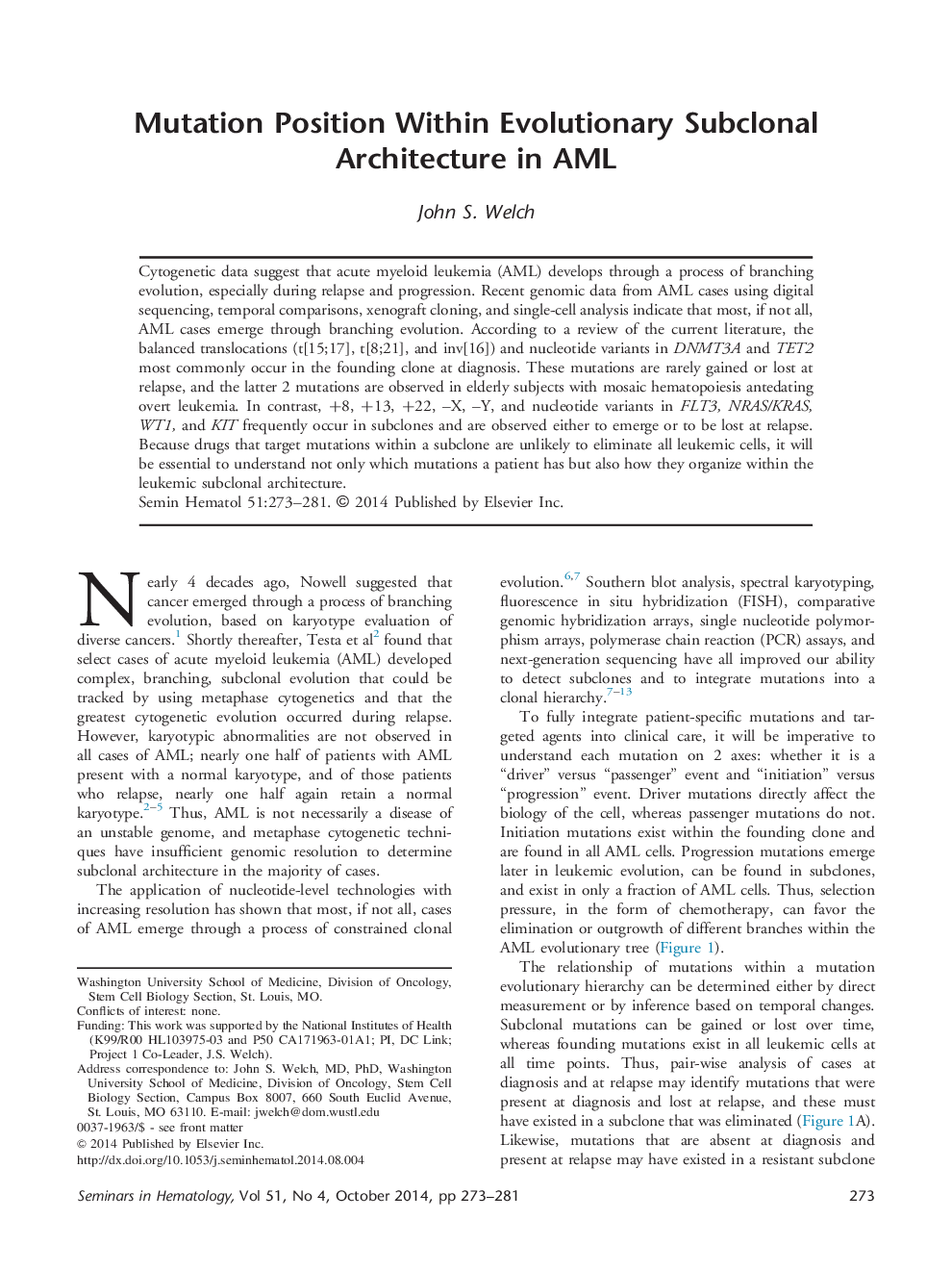| کد مقاله | کد نشریه | سال انتشار | مقاله انگلیسی | نسخه تمام متن |
|---|---|---|---|---|
| 3333541 | 1213321 | 2014 | 9 صفحه PDF | دانلود رایگان |

Cytogenetic data suggest that acute myeloid leukemia (AML) develops through a process of branching evolution, especially during relapse and progression. Recent genomic data from AML cases using digital sequencing, temporal comparisons, xenograft cloning, and single-cell analysis indicate that most, if not all, AML cases emerge through branching evolution. According to a review of the current literature, the balanced translocations (t[15;17], t[8;21], and inv[16]) and nucleotide variants in DNMT3A and TET2 most commonly occur in the founding clone at diagnosis. These mutations are rarely gained or lost at relapse, and the latter 2 mutations are observed in elderly subjects with mosaic hematopoiesis antedating overt leukemia. In contrast, +8, +13, +22, –X, –Y, and nucleotide variants in FLT3, NRAS/KRAS, WT1, and KIT frequently occur in subclones and are observed either to emerge or to be lost at relapse. Because drugs that target mutations within a subclone are unlikely to eliminate all leukemic cells, it will be essential to understand not only which mutations a patient has but also how they organize within the leukemic subclonal architecture.
Journal: Seminars in Hematology - Volume 51, Issue 4, October 2014, Pages 273–281